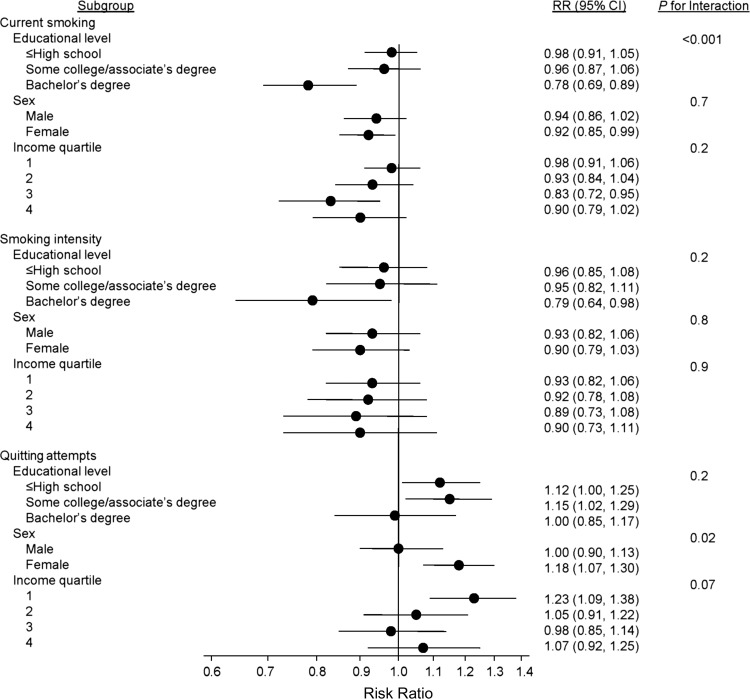Figure 1.
Association of 100% bans on smoking in bars and restaurants with within-person changes in smoking outcomes, by educational attainment, sex, and income, CARDIA Study, 1985–2011. Risk ratios (RRs) were estimated using fixed-effects Poisson models with robust variance estimates and were adjusted for time-varying covariates: time since baseline (linear trend), age, marital status, employment status, education, income, living with children, current alcohol use, state cigarette tax rate, and state of residence. P values are P’s for interaction between the covariate and hospitality smoking bans. Participants were linked to state, county, and city-level smoking ban exposures on the basis of census tract. Cutpoints for income quartiles (inflation-adjusted values in year 2000 US dollars): quartile 1, ≤$29,086; quartile 2, $29,087–$48,392; quartile 3, $48,393–$83,492; quartile 4, ≥$83,493. Bars, 95% confidence intervals (CIs). CARDIA, Coronary Artery Risk Development in Young Adults.

